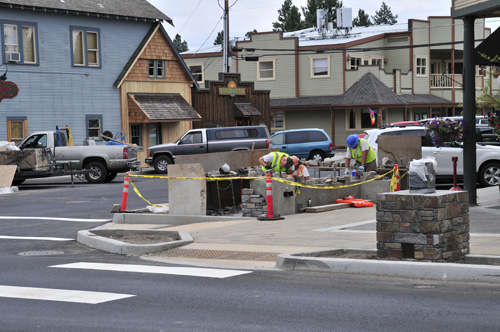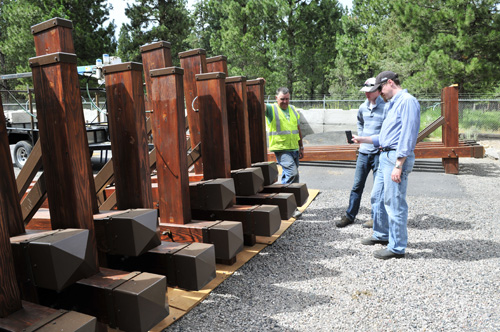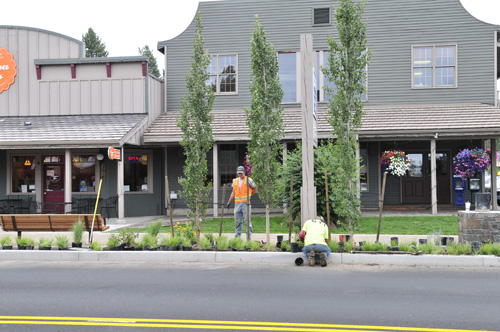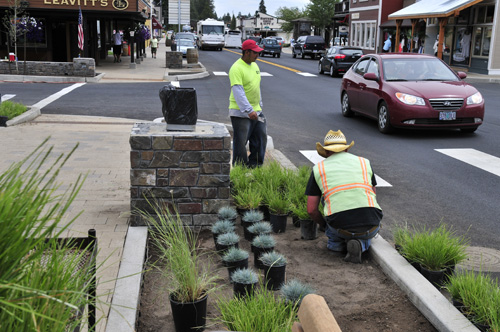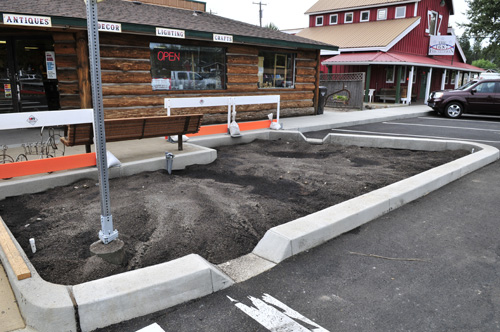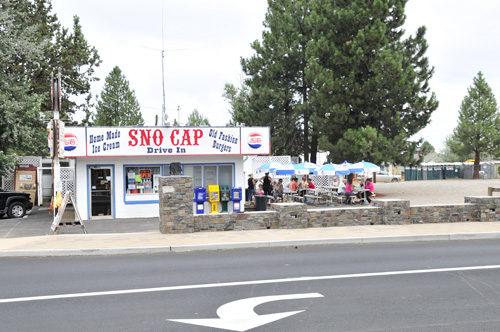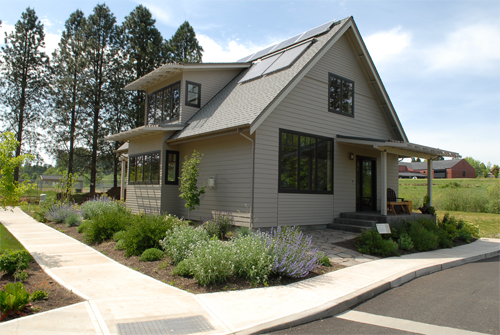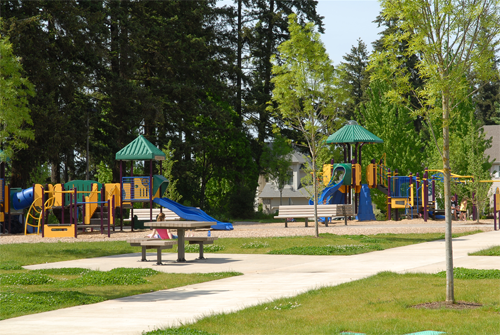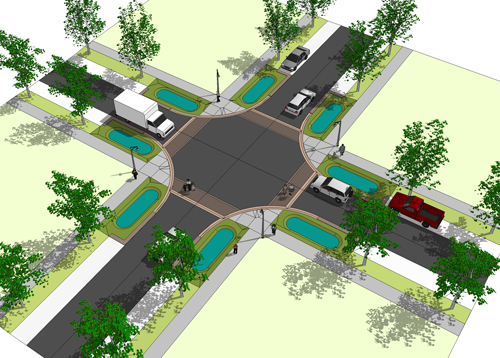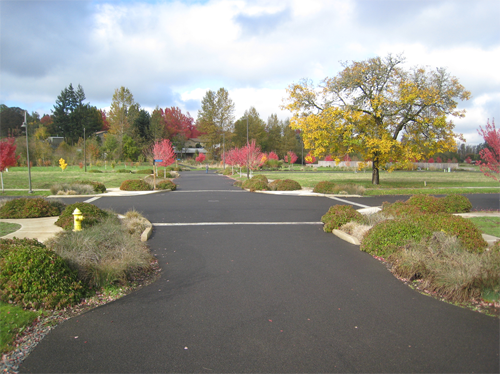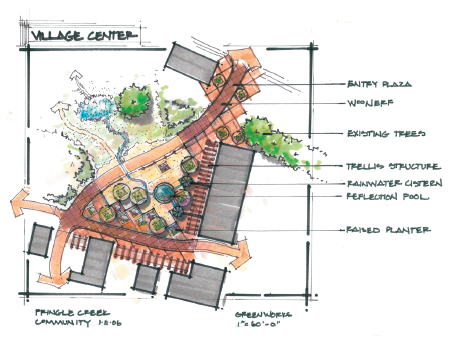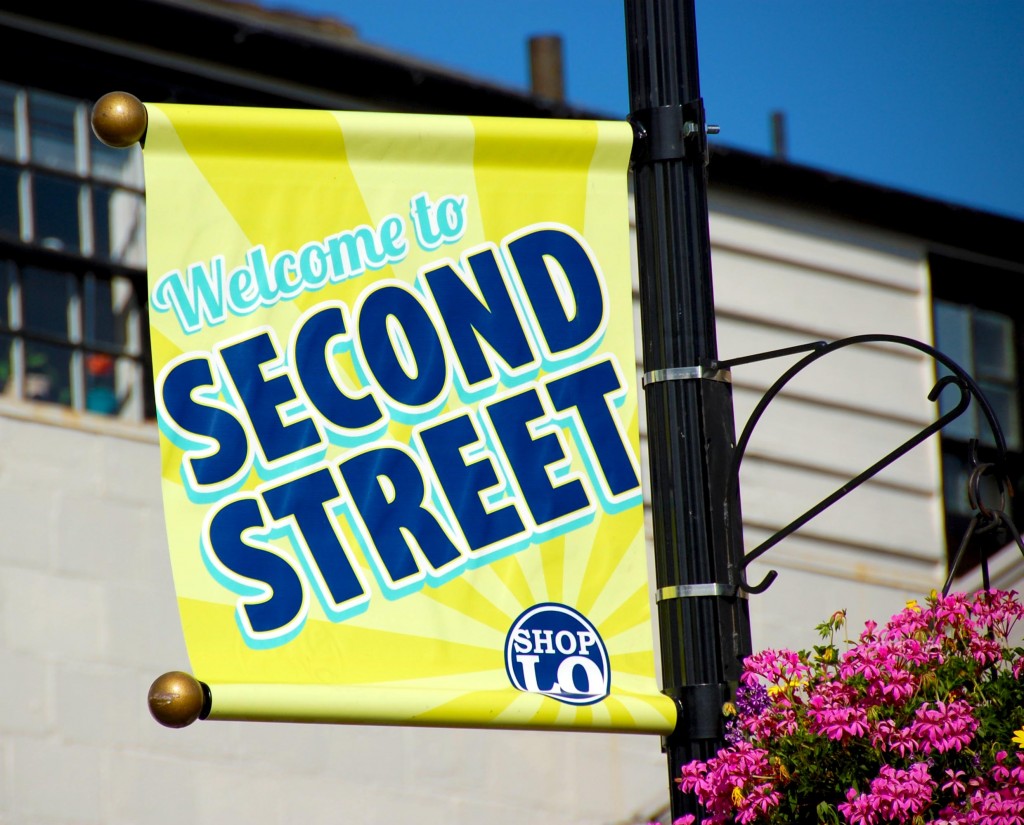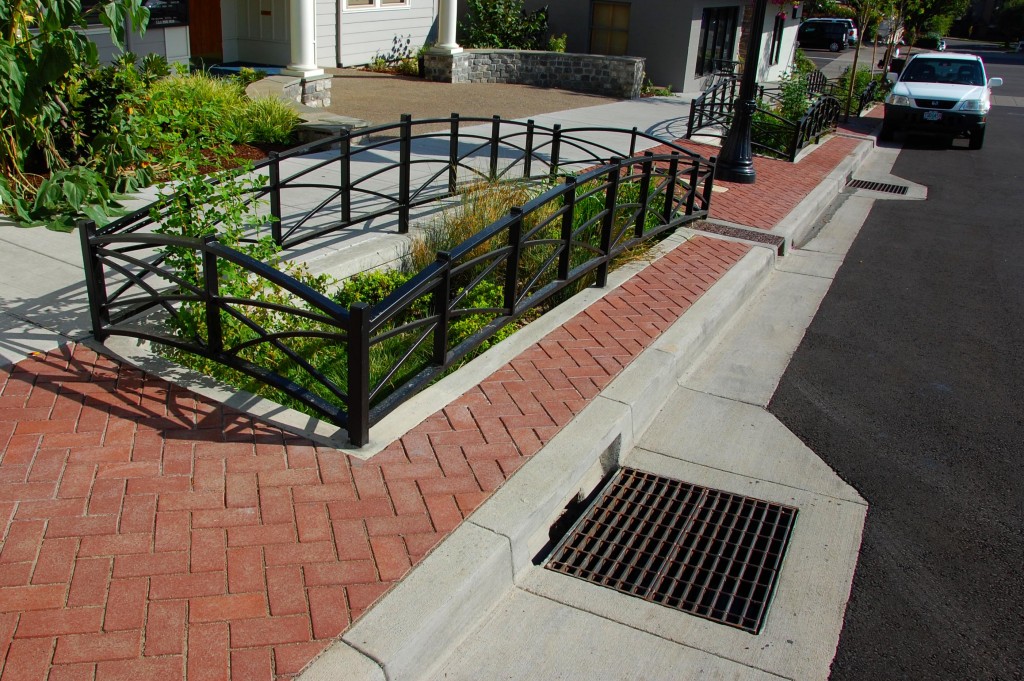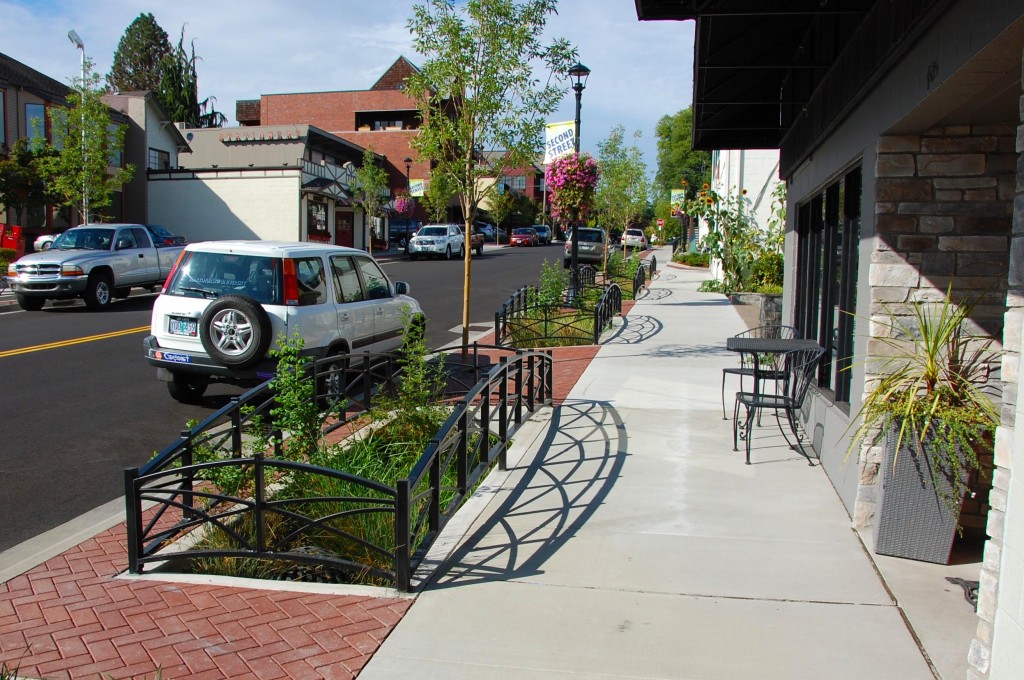What is a Log Dog?
/
We hear this a lot in reference to the art feature of the Clay Street Green Street project in Portland’s Central Eastside Industrial District (CEID). The Log Dog sculptures incorporated into the Clay Street swales reference and celebrate the district’s industrial past. In the 19th Century, the lumber industry used the Willamette River as a conduit for transporting logs to the lumber mills established along the banks of the river. Logs were tied together into rafts and piloted down the Willamette in massive convoys. These log rafts where chained together by cable that ran through attachments known as log dogs. The historic log dogs were like thick needles, driven into the floating logs before a cable was pulled through the eye and cinched to bundle them together, creating a raft. GreenWorks designed the streetscape for a 12-block section of SE Clay Street. Working with KPFF and artist, Linda M. Wysong, the green street provides a pedestrian friendly corridor from the Ladd’s Addition neighborhood to the Eastbank Esplanade, strengthening connectivity and improving the pedestrian realm. The green street honors the industrial district’s history through the art installations and interpretive elements. GreenWorks has contributed to the redevelopment of Portland’s Central Eastside Industrial District (CEID) over the last decade through improvements to the Clay Street Right of Way / RiverEast pedestrian plaza and most recently with Clay Street Green Street. The completed project provides sustainable environmental benefits, including vegetated stormwater management, pedestrian and bicycle passage, and strategies that maintain freight movement and business activities throughout the CEID.

The project’s artist describes the inspiration on the Clay Street Log Dog: “The Wetlands were filled, the mill erected and a city built. The land is transformed as the water continues to flow. It may seep into the earth or be hidden by stone and concrete, but it continues to connect, sustain and give form to our lives. Honor and protect the river.” Linda M. Wysong, artist



